Hawai’i is the United States’ Pacific paradise, overflowing with thundering waterfalls, verdant forests, clear waters, and a laid-back lifestyle that entices travelers. Many of those travelers flock to Maui, the second largest Hawaiian island and home to beloved destinations such as Haleakalā National Park, the Hāna Highway, and the resorts in Kāʻanapali and Wailea.
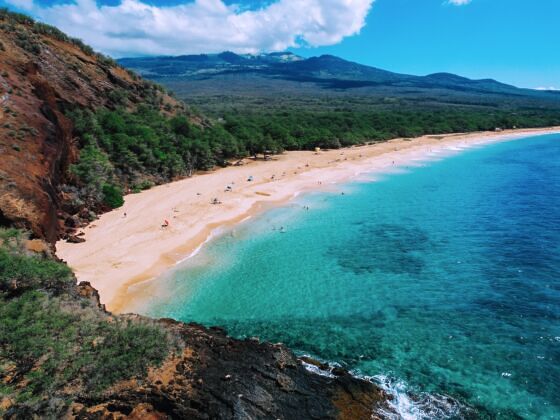

How to Visit Maui Responsibly and Respectfully in the Wake of Recovery
In 2022, nearly three million travelers visited Maui. In August 2023, wildfire tore through the island’s northwest Lahaina neighborhood, devastating families and communities and destroying historic and cultural artifacts. The affected area saw more than 800 businesses closed or destroyed, representing nearly $900 million of annual sales. Following the wildfires, tourism was significantly impacted not only in Lahaina and West Maui but also other neighborhoods: Maui suffered an approximately 50 percent drop in visitors as restaurants and hotels north of Lahaina remained off limits or ceased operations, which in turn affected the entire island.
Maui residents have since come together to rebuild a more resilient, and sustainable, community. Initiatives have included volunteer relief efforts, direct economic resources such as food banks and grocery cards, and a mobile response unit food truck from Maui Fresh Streatery that provides ingredient boxes for households.
In the wake of the rebuilding efforts, there has been considerable discourse on social media regarding whether or not tourism should be permitted in Maui, with an eye toward giving residents space to recover. As the conversation continues, Maui has opened for tourism, inviting visits centered on respect and aloha (a greeting that doubles as a word for love and camaraderie). Tourists are encouraged to mālama Maui, meaning care for the island, and give back to the community through enriching voluntourism opportunities during their stays.
While a small portion of Historic Lahaina Town remains out of bounds to everyone but essential services — and locals ask that visitors not photograph or film the affected areas, mementos, and private gatherings, even from afar — visitors are encouraged to support areas that were adversely affected by the drop in tourism to Lahaina and West Maui, including Wailuku, Kahului, Pāʻia, Hāna, and Upcountry.
There are various ways to visit these areas responsibly: Mālama for the island in your own way through local cultural experiences and voluntourism opportunities with Kipuka Olowalu, Maui Cultural Lands, Hawai’i Farm Project, or The Maui Chocolate Factory Experience. Support local businesses all over the island, not just in West Maui. Patronize local tour companies for activities, such as the Maui Pineapple Tour.
The best times to visit Maui are April through May and September through November. Here’s how to support and experience Maui respectfully when you come.
The best things to do on Maui
Hawaiian cultural classes and talk story
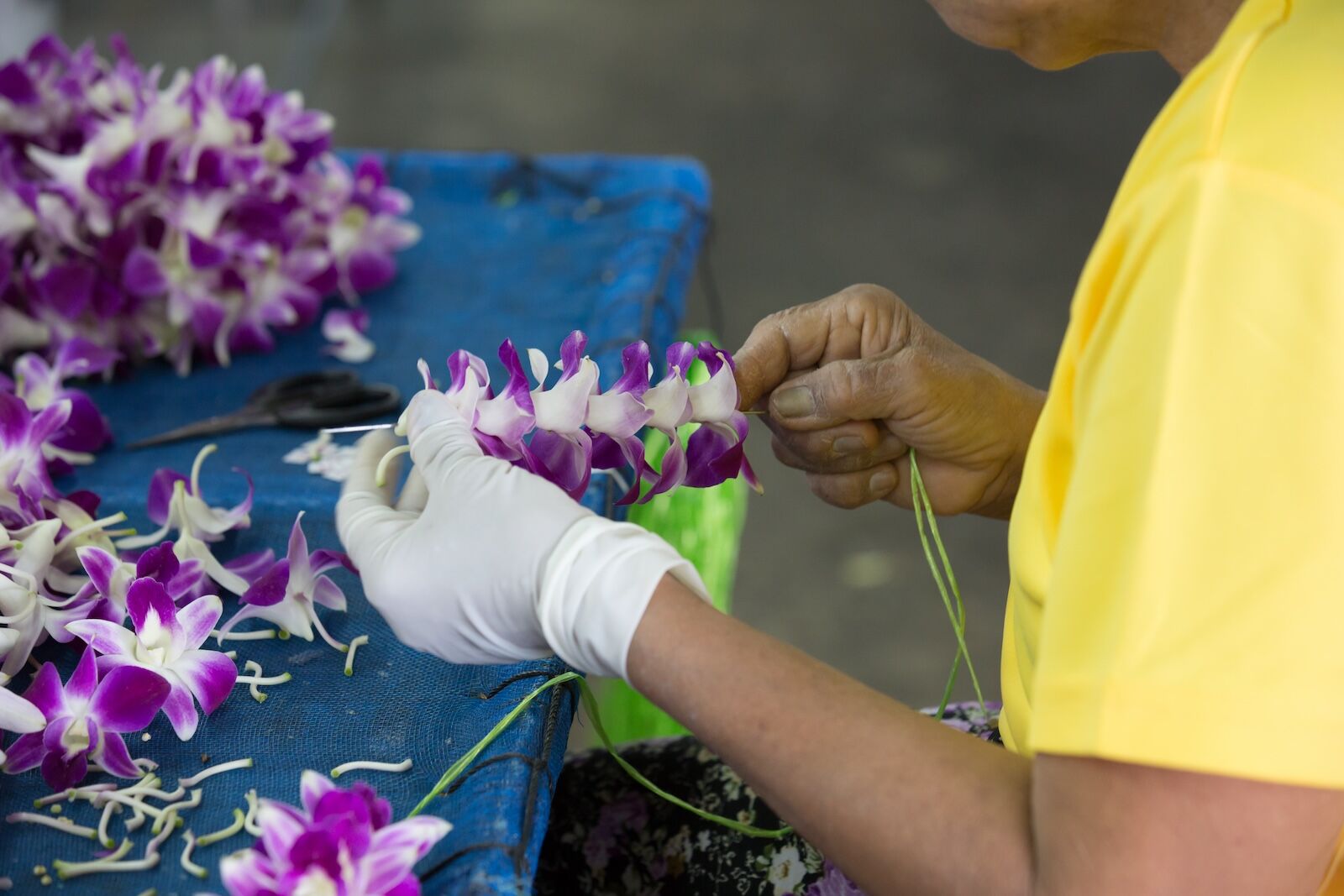
Photo: Jotika Pun/Shutterstock
Many resorts and tours facilitate classes led by skilled native Hawaiian cultural practitioners. This includes ‘ukulele classes, lei making, lauhala (leaf) weaving, and kukui nut bracelet making. These classes are not only fun and creative but also typically accompanied by “talk story,” the practice of chatting and passing down knowledge, information, and memories.
Through talk story, visitors will learn about the history of the activities they’re participating in, the arrival of early Polynesians to the Hawaiian islands, and the introduction of native plants and fruit such as taro, niu (coconut), ulu (breadfruit), and ‘uala (sweet potato). Visitors will also glean insights into the interesting backgrounds of local islands, such as the unincorporated community of Kalaupapa on the island of Moloka’i, which is also a national historic park, and the crescent-shaped Molokini Island that’s popular with snorkelers.
Make the most of cultural classes by being genuine in your interaction. Don’t be shy to ask questions about Maui’s history and culture. Large resorts like the Hyatt Regency Maui Resort & Spa host daily classes for guests that can be booked separately.
Road to Hāna scenic tour
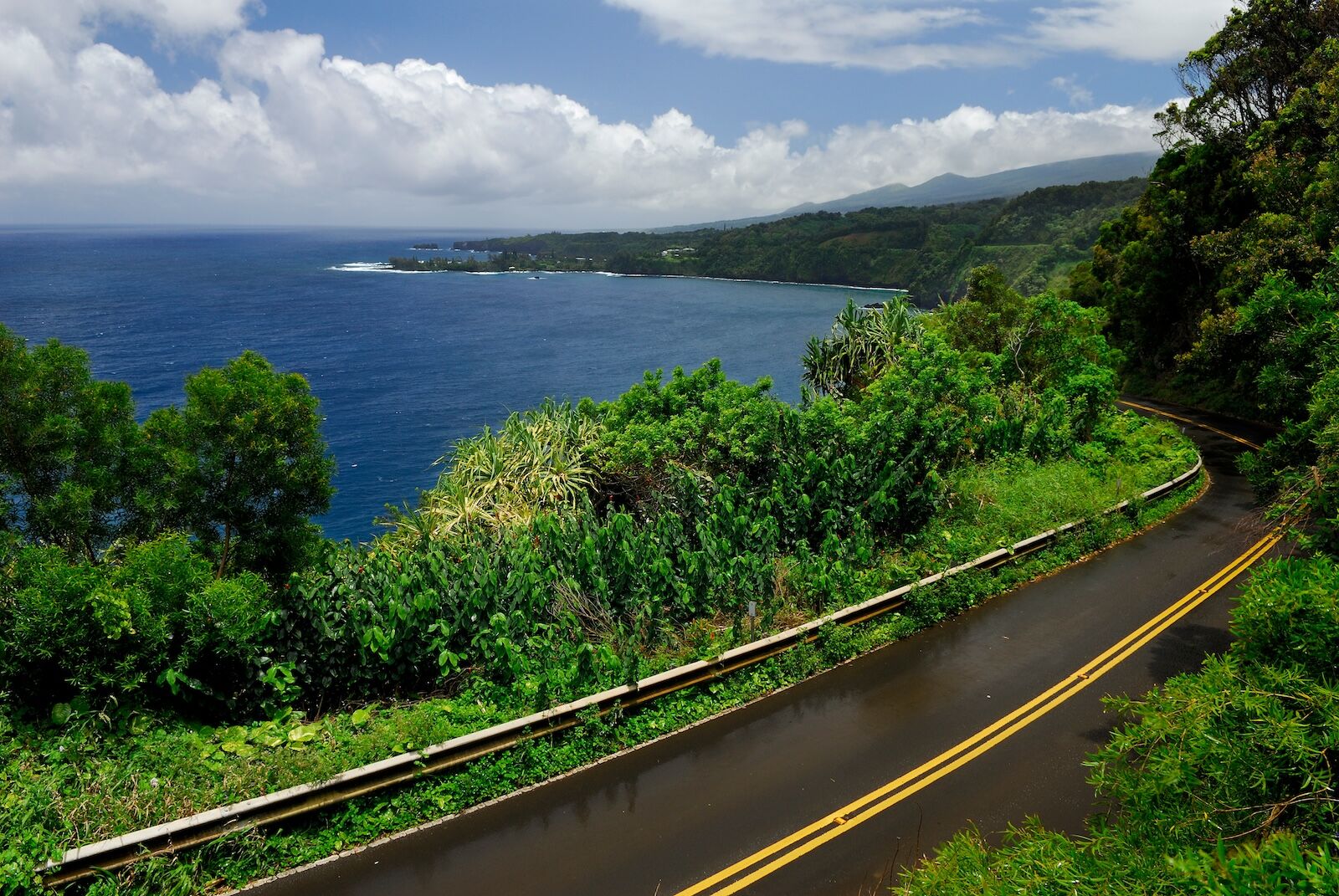
Photo: Reimar/Shutterstock
The Hāna Highway is one of Maui’s most iconic attractions. The Road to Hāna tour is a 10-hour road trip that begins at 6:30 AM and ends at 4 PM, winding through more than 650 turns and across 65 one-lane bridges along the way. It’s a beautiful loop but also one that can trigger motion sickness — prepare accordingly.
While visitors can drive the Road to Hāna themselves, it’s highly recommended to take a tour instead, as tour drivers are familiar with the complex route and any detours that might occur. Tour companies such as Hāna & Beyond Tours have early pick-up times and plan several stops along the way. The first stop is at a country store for restrooms, snacks, and the famous “Hāna tonic” — a wellness shot with ginger, lemon, cayenne pepper, and pineapple that’s said to help prevent motion sickness. It costs $5 a bottle — buy two even if you have a sturdy stomach.
Scenic sights built into the tour include Ho’okipa Beach and its large green turtles, the black-sand beach and waterfalls of Waiʻānapanapa State Park, a secluded grove of rainbow eucalyptus trees, and many more of Maui’s natural wonders. Pro tip: On the way to Hāna, sit on the right side of the vehicle to be blessed by views of several stunning waterfalls, lush tropical forest and foliage, endemic Hawaiian plant species, and the blue waters of the ever-present Pacific Ocean.
Volunteering in nature on cultural lands
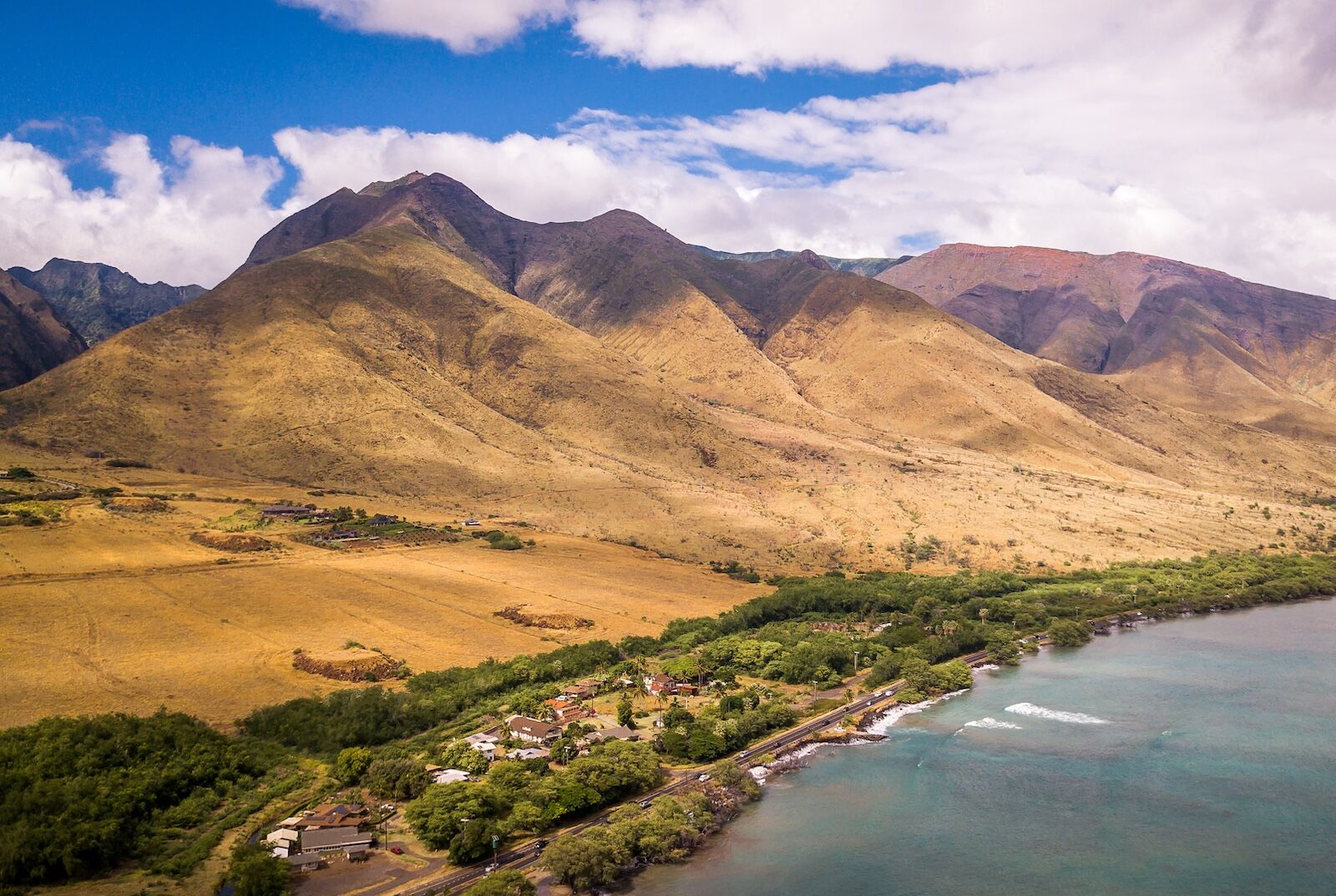
Photo: Lucie Kusova/Shutterstock
One of the best ways to have an enriching experience in Maui that also has a positive impact is to get involved in voluntourism activities on Indigenous lands. One example is the Mālama Honokōwai project run by Maui Cultural Lands, which entails removing invasive plants and restoring the ancient home of a Hawaiian community.
Visitors to Maui can also help to preserve Native Hawaiian cultural sites in the Olowalu valley through efforts organized by Kipuka Olowalu. You’ll meet at a pick-up point, get into trucks with the organizers, and go off-roading over rocks and gravel up the valley, seeing a slice of the island that you can’t drive to alone as there are no directions for those unfamiliar with the area. Wear long pants and a warm shirt, as the valley is cool, and bring insect repellent, a sunhat, lunch, water, sunscreen. Gloves and implements will be supplied by the organizers. The activity lasts approximately three hours, and there are no restrooms available — so be sure to go before you go.
Maui Pineapple Tour

Photo: wildephoto/Shutterstock
In the 1890s, David and Henry Baldwin formed the Maui Pineapple Company, launching the island’s first commercial pineapple farm. Over the next several decades, the company merged and changed names until it ceased production in 2009 after 97 years. An offshoot group formed the Hali’imaile Pineapple Company to grow and sell Maui Gold pineapples, and this company gives tours of its pineapple plantation in upcountry Hali’imaile.
The Maui Pineapple Tour begins with a van ride to the pineapple fields where the driver (who is also the tour guide) shares a brief history of Maui’s pineapples and sustainability, such as the presence of wild pigs to eat leftover pineapples or rejected fruit that gets processed into liqueur. The fields stretch as far as the eye can see, and for many visitors, it’s a unique opportunity to visit a pineapple plantation. The guide demonstrates how to properly cut and segment a pineapple and offers several sweet wedges to the group. At the end of the tour, each visitor leaves with a single Maui Gold pineapple that’s approved for air travel within the US.
Exploring the beach town of Pāʻia
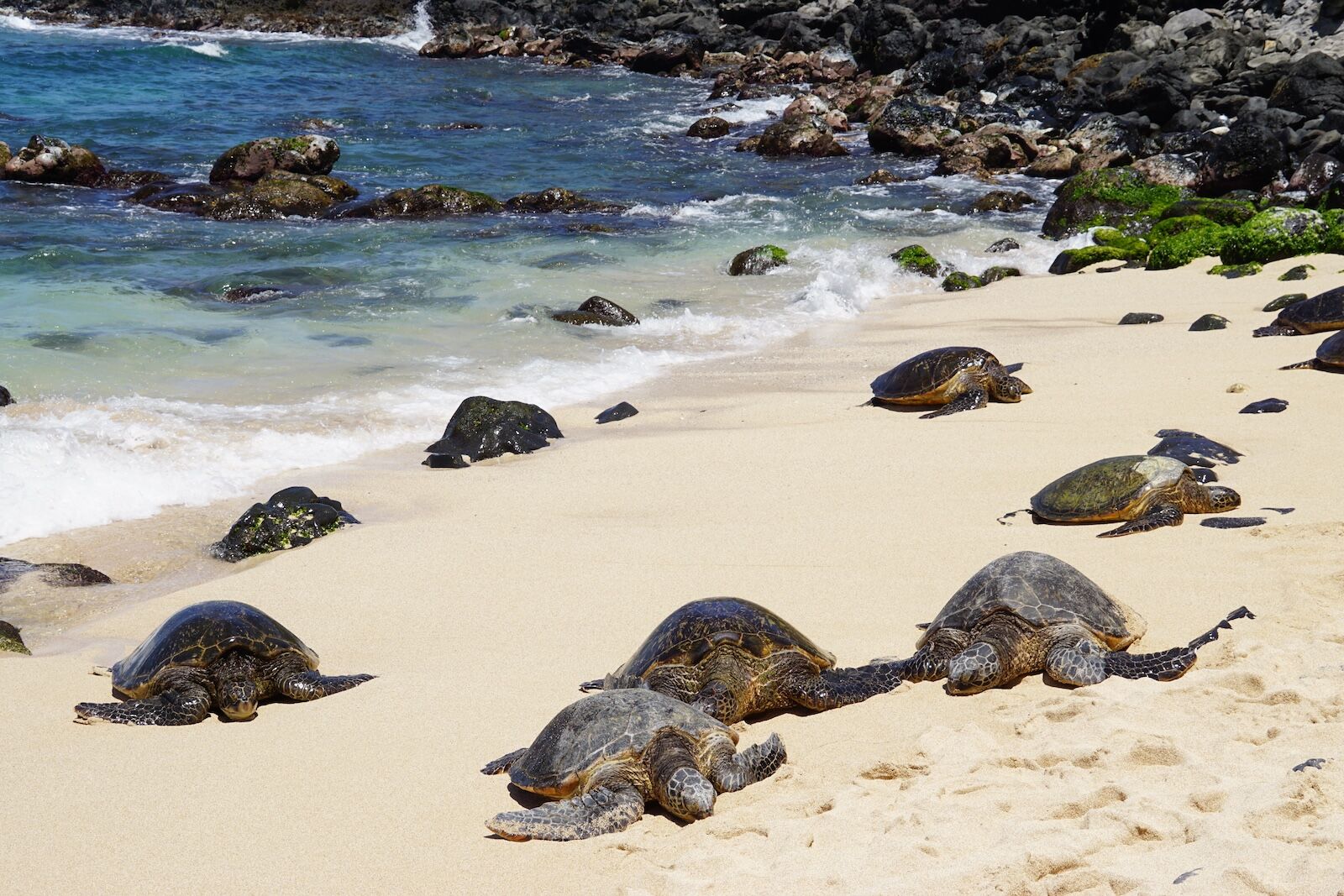
Photo: EQRoy/Shutterstock
A surfer’s paradise, the small beach town of Pāʻia on Maui’s North Shore is filled with colorful facades, artisanal and eclectic shops, a laid-back atmosphere, and diverse dining options. Pāʻia is also one of the stops on the iconic Road to Hāna tour — one of its beaches, Ho’okipa Beach, is the windsurfing capital of the world, as well as home to endangered green turtles that lay their eggs on the sand.
Self-guided walking tour of Wailuku
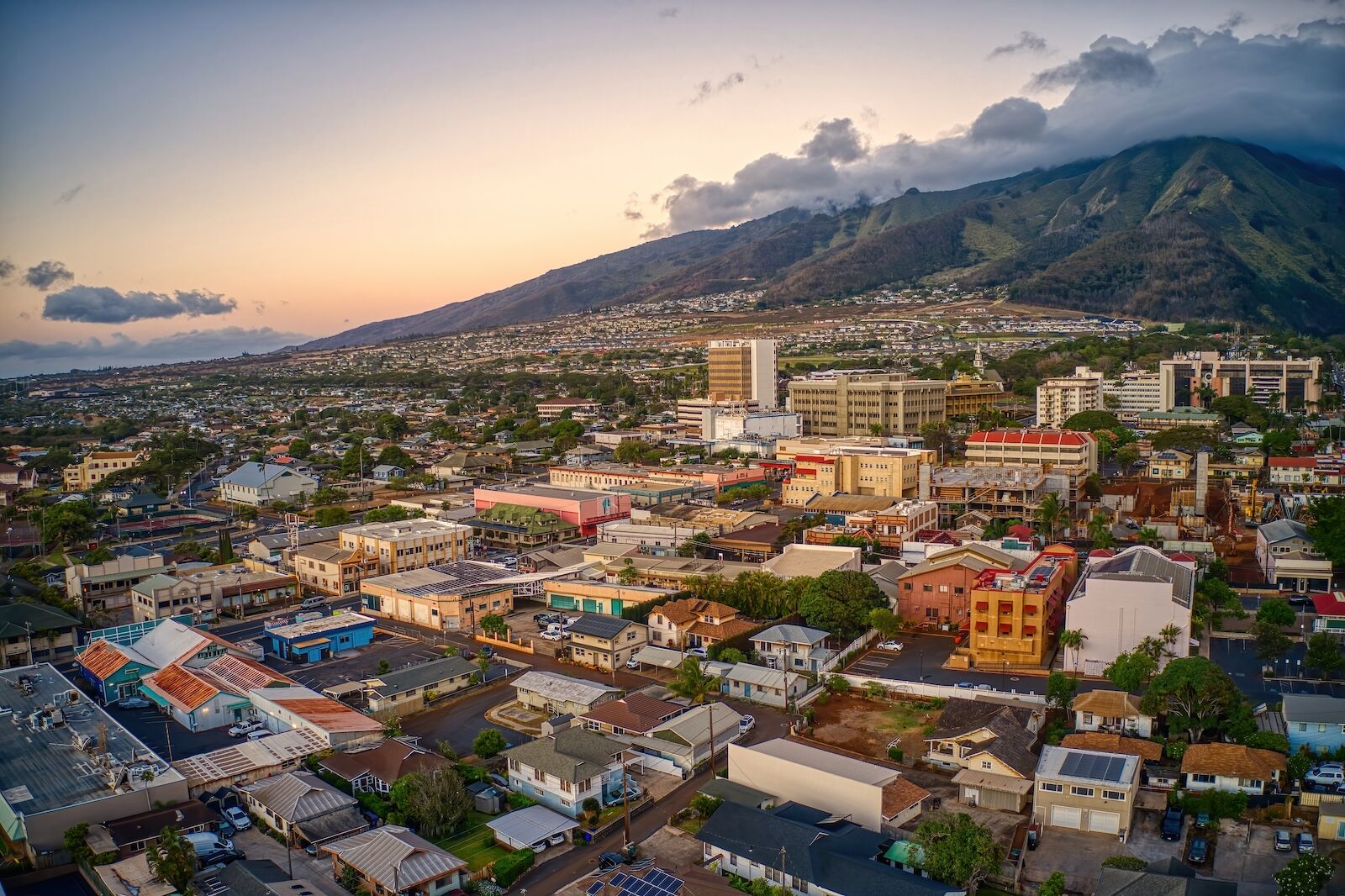
Photo: Jacob Boomsma/Shutterstock
Wailuku is a Central Maui town that possesses historic buildings and cultural sites, such as the Maui Historical Society’s Hale Hōʻikeʻike at the Bailey House, a repository of history and art from Maui and Hawai’i at large. There, you can view Hawaiian artifacts that predate Western contact, as well as thousands of archival letters, photographs, maps, and records of the island’s communities. The Bailey House is surrounded by a lush tropical environment that’s been left to return to nature with nothing but chirping birds and the whistling wind as background noise.
Walking distance from the museum is downtown Wailuku. There, find a cluster of murals for a self-guided street art tour titled Small Town*Big Art; a commercial area with eateries, restaurants, and cafes; and a Hawaiian crafts shop specializing in locally made keepsakes like woodwork, art, and lei at Native Intelligence.
Where to eat and drink on Maui
West Maui
If you’re staying in West Maui, guest or non-guest, the Hyatt Regency Maui Resort & Spa has several great dining options. For casual lunch or dinner fare, Umalu serves burgers, salads, entrees, and tropical cocktails alongside views of the Pacific Ocean and a poolside waterfall. For Asian fusion and Hawaii-inspired cuisine along the Kāʻanapali beachfront, try Japengo. The resort’s Son’z Steakhouse is the perfect choice for an all-out dinner, with prime cuts of beef, sumptuous seafood, and an extensive wine list — plus, the steakhouse is situated by the resort’s pond where swans and ducks swim around for some added entertainment.
Pāʻia
Grab lunch at the Pāʻia Fish Market Restaurant for seafood burgers and fresh catches ranging from ahi tuna and ono (a fish in the mackerel family with a relatively mild flavor) to snapper, prepared blackened, Cajun-style, or sauteed with sides of potatoes, fries, or rice. Mama’s Fish House Restaurant might be unavailable given that reservations open 18 months in advance, but if you can get in, enjoy as skilled chefs pair fish freshly caught by local fisherman with seasonal flavors — think ahi and onaga (long-tail snapper) with ‘ulu (breadfruit), mango, and liliko‘i (passionfruit).
Upcountry
For local cuisine, take a trip to Ulupalakua Ranch in Kula for grass-fed venison, beef, and lamb, served with sides such as grilled pineapples and locally grown vegetables. For lunch and dinner, Kula Bistro dishes up platters of coconut shrimp, sauteed clams, crab cakes, and assorted desserts, all of which taste extra delicious in the fresh mountain air. Plating up Neapolitan pizzas, shellfish, and locally sourced ingredients, Marlow presents city-caliber cuisine in the countryside. Elsewhere, the century-old Hali’imaile General Store in Makawao is a go-to for Hawaiian regional cuisine across the road from the Maui Pineapple Tour.
Kahului/Wailuku
In Kahului, Tin Roof is a local establishment churning out garlic noodles, pork belly, mochiko chicken, six-minute eggs, and other local comfort dishes. Downtown Wailuku has SixtyTwo MarcKet for breakfast crepes, yogurts, and lunch menus of poke bowls, crostinis, soups, and fresh salads. Farther from downtown, head to Wailuku for Tiffany’s Restaurant & Bar if you’re in the mood for an early dinner of tasty brisket, noodles, seafood, and Asian fusion fare. And for those with a relentless sweet tooth, visit Tasaka Guri Guri Shop (guri guri is a frozen treat on Maui that’s a hybrid of soft serve ice cream and sherbet) or Maui Specialty Chocolates in Kahului — both are must-trys for frozen treats and hand-crafted desserts.
Note: Many Maui restaurants are closed on Mondays, other days of the week, or open half days, so be sure to confirm that restaurants are open before you go.
Where to stay on Maui
Hyatt Regency Maui Resort & Spa
The Hyatt Regency Maui Resort in Lahaina is an all-inclusive overlooking the Pacific Ocean. It has 88 suites and 718 double rooms. There’s a large courtyard for relaxation, fresh air, and views, with unrestricted access to poolside restaurants. Most rooms have balconies that overlook the ocean; room keys are bracelets that are also to operate elevators and rent towels. Rates start around $450 but can increase to around $600 during peak season.
The resort has restaurants, a coffee shop, a supermarket, and a souvenir shop, perfect for forgotten items and keepsakes. But the piece de resistance is the resort’s manicured gardens with swaying coconut trees, a grotto waterfall, and a collection of swans. The resort prides itself on sustainability measures including energy and water conservation, food waste management, and a chef’s garden of herbs and vegetables used on site. The front desk is happy to assist with excursions and on-site cultural classes, and the property is outfitted for guests with disabilities.
Hyatt Regency Maui Resort & Spa: 200 Nohea Kai Drive, Lahaina
Lumeria Maui
Located in a quiet Upcountry neighborhood with picturesque mountain views, Lumeria Maui is a unique and relaxing change from bustling West Maui. Guests can enroll in classes for yoga, meditation, dance, ‘ukulele, and healing arts on expansive grounds filled with canopy trees and verdant foliage. There’s a hammock grove among quiet shade trees, and fruit trees such as mango, guava, and avocado grow on site and are used in meals by the hotel’s restaurant, The Wooden Crate, which prepares farm-to-table meals.
Rooms are in rows of bungalows with Hawaiian names like Hulu (esteemed) and Anuenue (rainbow). There are no televisions or cable, but there is free WiFi — a perfect excuse to try a more offline stay. Rates vary between $450 and $469.
Lumeria Maui Retreat Center: 1813 Baldwin Avenue, Makawao
How to get around Maui
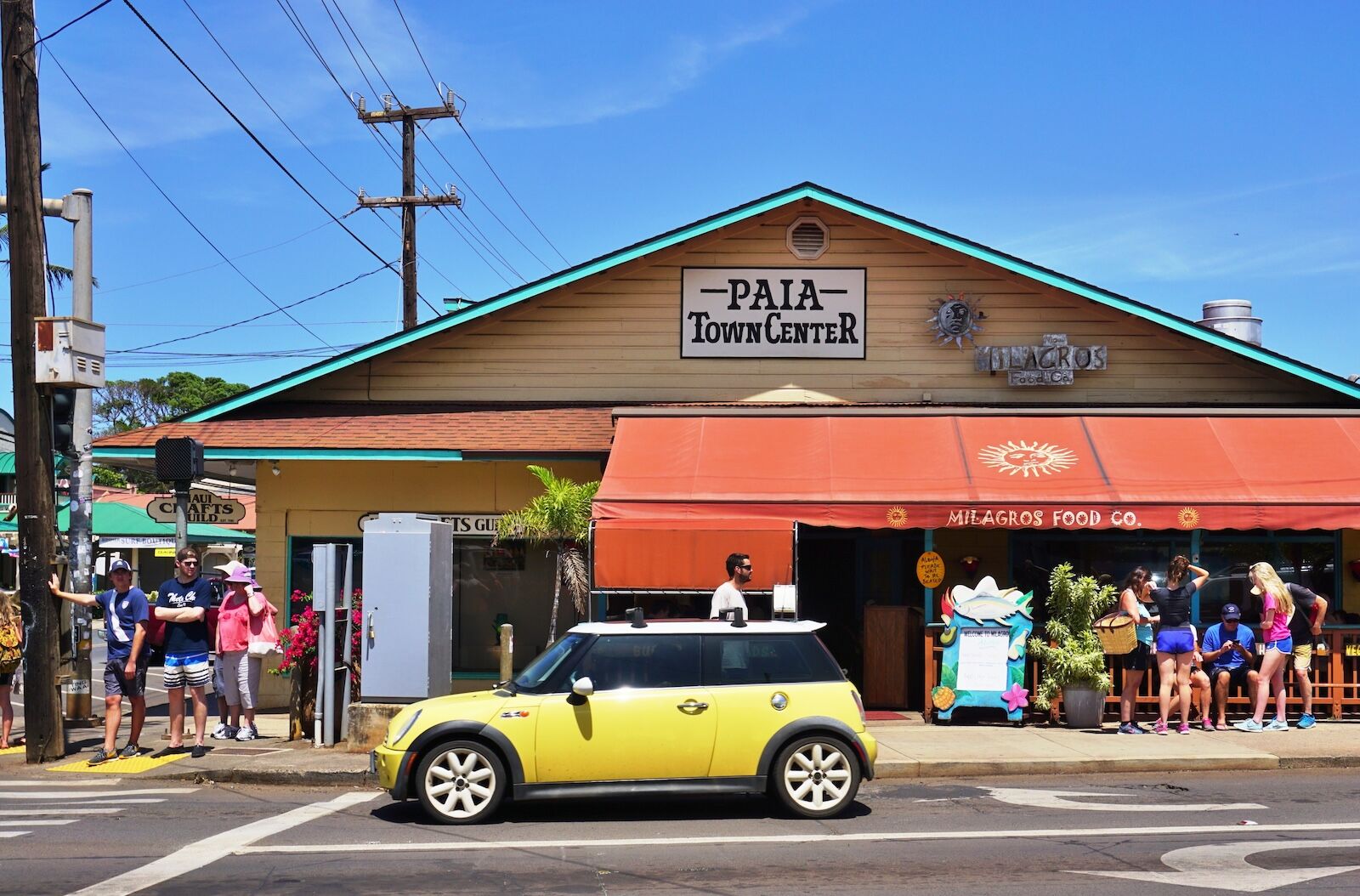
Photo: EQRoy/Shutterstock
Maui has pockets of walkable neighborhoods, such as Pāʻia and the Central Maui towns of Kahului and Wailuku; however many roads lack discernable sidewalks, and walkers might feel discomfort on the hard shoulder. It’s recommended to rent a vehicle for further exploration, especially in Upcountry and less developed areas of the island. Enjoying Maui without renting a vehicle is possible, as Ubers are available within 15 minutes or less of ordering. Taxis are also available; ask local establishments and resort front desk staff for reliable recommendations.
How to support Maui locally or at home
There are several resources available to travelers who plan to help Maui rebuild and recover during their visits: What’s Open Maui is an excellent source for finding unique tours, entertainment, and cultural activities that are open to visitors. The Hawai’i Tourism Authority’s HTA Maui Recovery is another resource for tracking openings and rehabilitation efforts, while travelers can turn to Mākaukau Maui for news on Maui’s readiness and support for businesses and community members.
You can also support Maui from home by purchasing drinks, snacks, and skincare made from locally sourced ingredients from the Aloha Market. The e-commerce market is powered by Mana Up Hawai’i, an initiative that supports entrepreneurs and innovators in job creation and economic development.